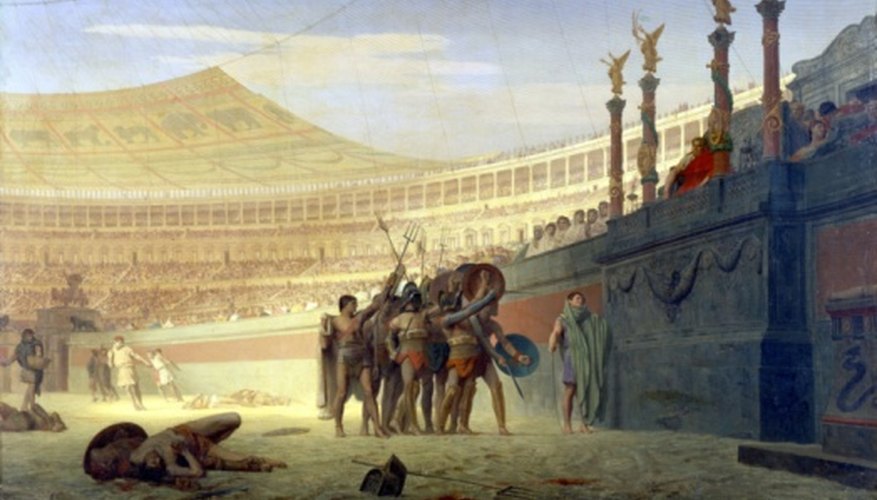Unsightly cracks on the surface of an oil painting damage its colour and quality and occur when the surface beneath the paint deteriorates. Repairing cracked paintings restores them to their original state. The process, which can be done at home, involves strengthening the surface with a beeswax and dammar resin mixture that prevents further deterioration and glues the paint to the stronger base.
Place the canvas face up on a dust-free table. Pile small strips of hard linoleum under the cracked areas of the canvas to create a support to protect the painting from further damage during repair.
- Unsightly cracks on the surface of an oil painting damage its colour and quality and occur when the surface beneath the paint deteriorates.
- Pile small strips of hard linoleum under the cracked areas of the canvas to create a support to protect the painting from further damage during repair.
Heat 1/4-cup dammar resin over a low flame until it dissolves. Stir 1/4-cup beeswax slowly into the dissolved resin. Continue to stir over heat until blended, then turn flame off. Fill the eyedropper with English turpentine. Add three drops to the mixture. Stir to blend, then cool to 76.7 degrees Celsius.
Load a small paintbrush with the 170-degree mixture. Apply liberally to the cracked areas of the painting. Poke the tip of the paintbrush gently underneath and between the cracks to saturate the front and back sides of the paint with the glue.
Heat the metal palette knife in a cup of hot water, then dry on a clean cotton rag. Press the flat side of the palette knife gently on to the saturated paint. The heat and pressure glue the saturated paint to the backing. Allow to dry and cool.
- Load a small paintbrush with the 170-degree mixture.
- Press the flat side of the palette knife gently on to the saturated paint.
Mix 1 cup of white flour and 1 cup of cold water to create a paste. Apply a thin layer of the paste over the glued areas of cracked paint. Cover the pasted area with Japanese tissue paper torn to fit. Allow to dry. Apply a second layer of paste over the tissue paper, and cover with gauze. Allow to dry. Cover the gauze with paste, then attach a piece of heavyweight archival paper over the gauze. Allow to dry, cover with paste, then attach one more layer of heavyweight paper.
- Mix 1 cup of white flour and 1 cup of cold water to create a paste.
- Apply a thin layer of the paste over the glued areas of cracked paint.
Lay the canvas facedown on a table covered with cloth. Heat the dammar-beeswax-turpentine mixture to 76.7 degrees C. Paint the glue on the back of the canvas behind the cracked areas of paint clearly visible as slightly darker than the rest of the canvas. Warm a dry iron to medium heat. Lay waxed paper over the back of the canvas, and iron the glued areas to further flatten and attach the cracked paint to the surface. Turn off the iron. Peel off the waxed paper. Allow to cool and dry.
- Lay the canvas facedown on a table covered with cloth.
- Heat the dammar-beeswax-turpentine mixture to 76.7 degrees C. Paint the glue on the back of the canvas behind the cracked areas of paint clearly visible as slightly darker than the rest of the canvas.
Turn the canvas face up on the table. Add supports underneath as described in Step 1. Spray the top layer of heavyweight paper with distilled water to dissolve the wheat-paste glue. Peel off the paper. Spray, then remove the second layer of heavy paper and the gauze. Spray the Japanese tissue paper with water, then wash off the paper and paste gently using the sponge.
